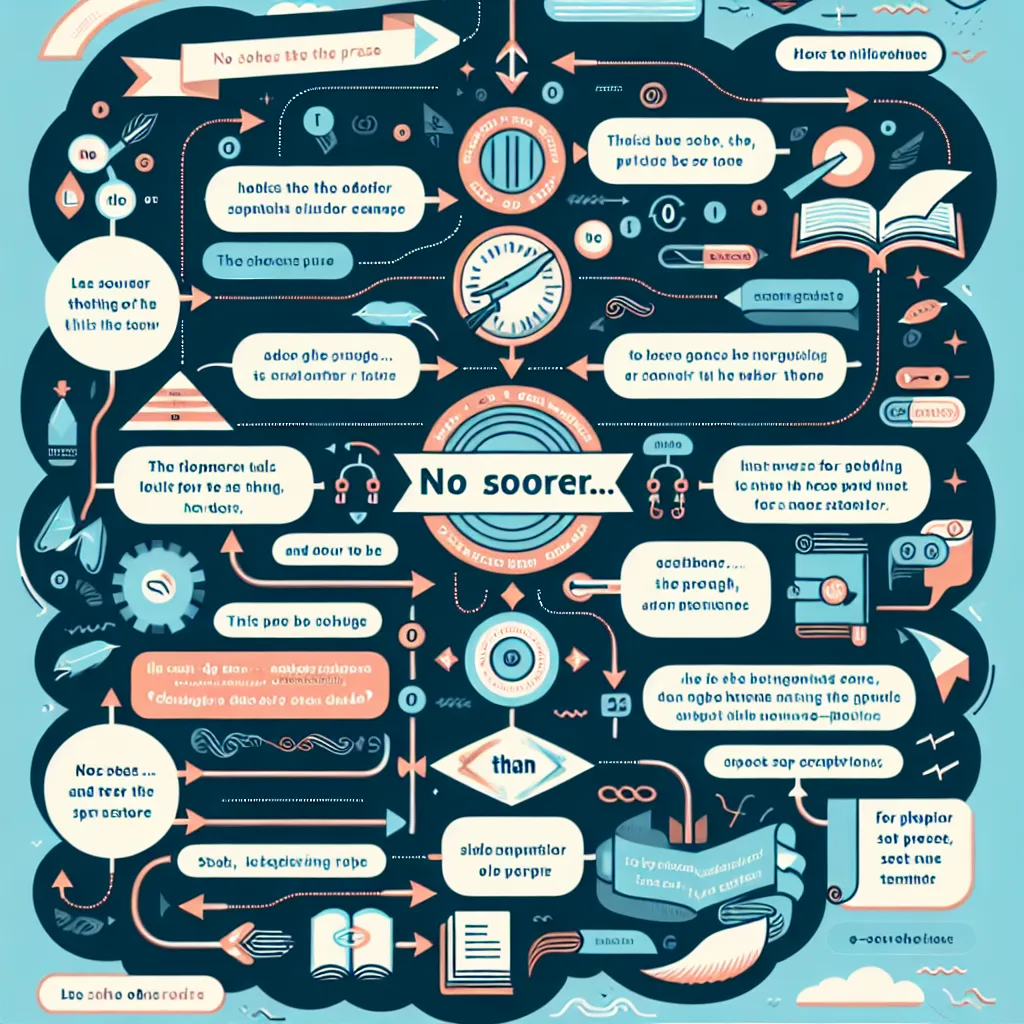“No sooner… than” is an advanced grammatical structure that can significantly enhance your IELTS score when used correctly. This expression is particularly useful in the Writing and Speaking sections of the test, where it can demonstrate a high level of English proficiency. Let’s delve into its meaning, usage, and how to effectively incorporate it into your IELTS responses.
Understanding “No Sooner… Than”
The phrase “no sooner… than” is used to express that one action happened immediately after another. It emphasizes the quick succession of events and adds a sophisticated touch to your language use. This structure is often seen in Band 7 and above IELTS responses.
Examples:
- No sooner had I arrived at the airport than I realized I had forgotten my passport.
- No sooner did the lecture end than students rushed out of the classroom.
- The movie had no sooner started than the fire alarm went off.
In each of these examples, the second action follows the first almost immediately, creating a sense of rapid sequence.

Grammar and Structure
The correct structure for using “no sooner… than” is:
No sooner + auxiliary verb + subject + main verb (past participle) + than + subject + past simple verb
It’s crucial to note that the first part of the sentence uses inversion, similar to question formation. This inversion is what makes the structure more complex and impressive to IELTS examiners.
Variations in Usage:
-
With ‘had’:
No sooner had + subject + past participle + than + subject + past simple
Example: No sooner had the bell rung than the students rushed out. -
With ‘did’:
No sooner did + subject + base verb + than + subject + past simple
Example: No sooner did the rain stop than the sun came out. -
In the past perfect:
Subject + had no sooner + past participle + than + subject + past simple
Example: She had no sooner finished her meal than the waiter brought the bill.
Applying “No Sooner… Than” in IELTS Writing
In IELTS Writing, using “no sooner… than” can elevate your Task 2 essay or Task 1 report, particularly when describing sequences of events or cause-and-effect relationships.
Task 2 Essay Example:
“Environmental conservation is a pressing global issue. No sooner had governments implemented stricter regulations than industries began seeking loopholes. This cat-and-mouse game between regulators and polluters highlights the need for more comprehensive and enforceable environmental policies.”
Task 1 Report Example (Process Diagram):
“In the coffee-making process, no sooner does the water reach boiling point than it is poured over the ground coffee beans. This immediate transfer ensures that the optimal temperature is maintained for extracting the full flavor of the coffee.”
Enhancing IELTS Speaking Responses
Incorporating “no sooner… than” in your Speaking test can demonstrate advanced language skills, especially in Part 2 (Long Turn) and Part 3 (Discussion).
Speaking Part 2 Example:
Topic: Describe a time when you had to hurry.
“I remember a time when I almost missed an important job interview. No sooner had I woken up than I realized my alarm hadn’t gone off. I rushed through my morning routine, barely having time to make myself presentable…”
Speaking Part 3 Example:
Question: How has technology changed the way people work?
“Technology has dramatically accelerated the pace of work. No sooner does one task end than another begins, thanks to instant communication and automated systems. This rapid succession of tasks can lead to increased productivity but also heightened stress levels among workers.”
Achieving Higher Band Scores with “No Sooner… Than”
Using “no sooner… than” correctly can contribute to achieving Band 7 and above in IELTS. Here’s how it impacts different band scores:
- Band 6: May attempt to use the structure but with errors or in limited contexts.
- Band 7: Uses the structure correctly but perhaps not frequently or with full confidence.
- Band 8-9: Uses the structure accurately, naturally, and in various contexts, demonstrating full command of complex grammatical patterns.
Example for Band 8-9:
“In the realm of technological advancements, no sooner has one innovation been widely adopted than another emerges to supersede it. This relentless pace of progress, while driving economic growth, also poses challenges for both consumers and businesses in terms of adaptation and sustainability.”
Common Mistakes to Avoid
-
Incorrect word order:
Incorrect: No sooner the rain stopped than…
Correct: No sooner had the rain stopped than… -
Using ‘when’ instead of ‘than’:
Incorrect: No sooner had I arrived when…
Correct: No sooner had I arrived than… -
Forgetting the inversion:
Incorrect: No sooner I had finished…
Correct: No sooner had I finished… -
Using the wrong tense:
Incorrect: No sooner did I arrived than…
Correct: No sooner did I arrive than… -
Overusing the structure:
While it’s an impressive structure, using it too frequently can seem unnatural. Aim to use it once or twice in a writing task or speaking response for maximum impact.
Conclusion
Mastering the “no sooner… than” structure can significantly enhance your IELTS performance, particularly in Writing and Speaking. It demonstrates a sophisticated command of English and can help you achieve higher band scores. Remember to practice using this structure in various contexts and to balance it with other complex grammatical patterns. As you prepare for your IELTS test, consider incorporating this structure into your responses on topics such as technological change, historical events, or personal experiences where rapid sequences of events are relevant.